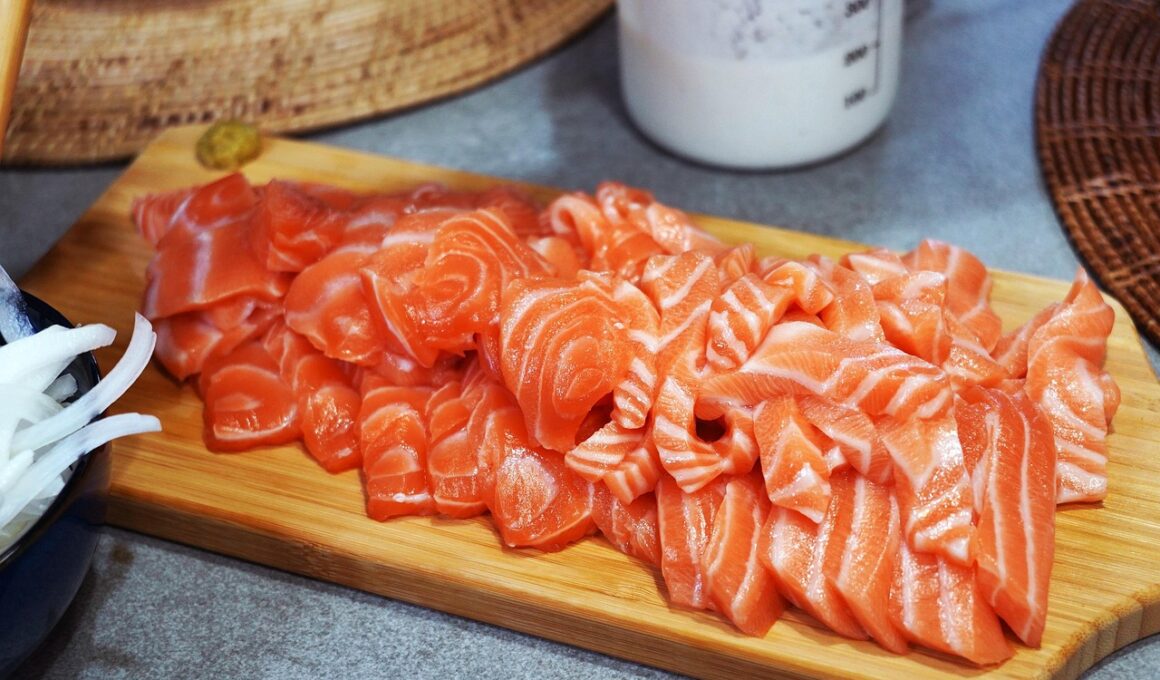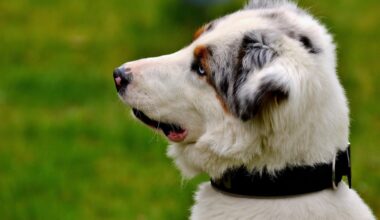Using Frozen Raw Food Safely: Best Practices
When preparing frozen raw food for dogs, safety is paramount to prevent foodborne illnesses effectively. It is crucial to maintain a clean environment to minimize contamination risks during the preparation process. Always ensure that counter surfaces, utensils, and storage containers are sanitized before use. This helps prevent harmful bacteria from coming into contact with the food. Additionally, be sure to wash your hands thoroughly before handling raw food to further reduce any potential contamination. By practicing good hygiene, you contribute to the health and safety of your pet. Furthermore, utilize separate cutting boards specifically designated for raw meat to avoid cross-contamination with other foods. Labels should clearly indicate which board is for raw food. Moreover, ensure your dog’s feeding area is also clean and regularly maintained. Regular sanitization of food bowls and feeding areas is essential. Adhering to these practices not only keeps your pet safe but also promotes overall health. Be attentive to signs of contamination or spoilage in food. Signs such as discolored meat or off-putting odors should never be ignored, as they indicate that the food might not be safe to consume for your furry friend.
It’s essential to understand proper thawing methods for frozen raw dog food. The safest way to thaw food is by placing it in the refrigerator. This slow thawing method keeps the food at a consistent safe temperature, reducing the risk of bacteria growth. Aim to transfer the food from the freezer to the refrigerator well in advance of meal times to allow it enough time to fully thaw. Another safe method to consider is using the microwave, but take care when employing this approach. Ensure that the food is defrosted evenly to prevent hot spots that could cause cooking, as cooked food can pose risks for dogs that need a raw diet. If using the microwave, promptly serve the food once thawed and avoid letting it sit at room temperature for extended periods. Never refreeze food that has been previously thawed; this can compromise food quality and safety. Monitor the thawed food closely, ensuring it remains fresh and free from spoilage. To summarize, always choose safe thawing methods to keep your dog’s raw food safe to consume and ensure a healthy dietary routine.
Storage of raw dog food is another critical consideration in ensuring safety. Once thawed, raw food should be stored properly to maintain freshness and reduce contamination risks. Ideally, keep thawed food in airtight containers to prevent exposure to pathogens and spoilage. Store these containers on lower shelves in the refrigerator to avoid any drips onto other food items. It’s best to consume thawed raw food within a couple of days — generally 1 to 2 days is a good rule for safety. You should also label containers with the date when it was thawed, allowing easy tracking of freshness. If you find that your dog does not eat all of the food in one go, always discard leftovers instead of saving them for later. This is essential for minimizing risks. Ensure frozen raw food is kept at 0°F or below when stored in your freezer. Inspect your freezer’s temperature regularly to prevent any thawing cycles that could jeopardize food safety. Following these guidelines can help ensure that your dog enjoys a healthy, safe diet without unnecessary risks associated with raw food preparation and storage.
When preparing raw food for your dog, portion control is vital for maintaining a healthy diet. Be sure to measure serving sizes accurately based on your dog’s weight, age, and activity level. This ensures that your dog receives the right nutrition without overfeeding. Use an appropriate scale or measuring cups specifically for pet food to make this process easier and more precise. Always adhere to the feeding guidelines provided by your veterinarian or pet nutritionist. It’s important to avoid common pitfalls, such as eyeballing portion sizes, as this may result in improper feeding amounts and potential health issues. Dogs can face various problems, including obesity or nutritional deficiencies, from inconsistent feeding amounts. Create a scheduling system to remind yourself of feeding times and quantity guidelines to help maintain discipline. This practice keeps your pet’s diet consistent and predictable, which can contribute positively to their behavior and overall wellness. Keeping track of your dog’s body condition score can help you assess whether your feeding routine serves its purpose. Adjust portions accordingly while maintaining a healthy balance and supporting its long-term health and vitality.
Feeding raw food to your dog also requires a keen eye for quality. Ensure that the raw meat and ingredients you select are fresh and sourced from reputable suppliers. Look for organic or high-quality options when purchasing raw food products for your dog, as ingredients play a significant role in your pet’s health. Check for proper packaging, expiration dates, and any visible signs of spoilage before purchasing. Avoid buying raw food products that appear discolored or have an unpleasant odor, as these could indicate that the product is past its prime. Familiarize yourself with common raw food ingredients used in recipes, such as muscle meat, organ meats, bones, and vegetables, and understand their roles in a balanced diet for your dog. Consulting with a pet nutritionist or a veterinarian familiar with raw feeding can help you choose the best options tailored to your dog’s specific needs. A commitment to quality will ensure that your furry friend receives all necessary nutrients while minimizing health risks. Therefore, prioritize sourcing the best ingredients for your pet’s meals to support sustained health and vitality.
Additionally, maintaining proper food temperatures during preparation and serving is crucial for raw food safety. Raw meat is susceptible to bacterial growth, particularly when it is left at room temperature for an extended time. After thawing, ensure that the food remains at safe temperatures until it’s served. To minimize any risks, keep the food chilled until it’s mealtime, serving it directly from the refrigerator to your dog. If your dog does not eat immediately, keep the leftovers cold or return them to the refrigerator promptly. A helpful tip is to serve small portions that your dog can eat in one sitting to eliminate leftovers. Furthermore, it may be worth purchasing an infrared thermometer to monitor food temperature accurately. When feeding, quickly aim to transition your dog’s meal back to cool temperatures if leftovers must be refrigerated. Always prioritize food safety and quality over convenience when it comes to you and your furry friend’s nourishment decisions. Proper temperature management in food handling will maintain its integrity while securing your dog’s health in each meal you serve.
Finally, it’s essential to observe your dog’s health and behavior after switching to a raw food diet. Pay close attention to any changes in your dog’s digestion, energy levels, and overall wellbeing. Monitoring how they react to the new diet will allow you to identify potential issues early on. If you notice signs of upset stomach, vomiting, or diarrhea, review the diet composition and your food handling practices. Consulting a veterinarian if your dog experiences adverse effects from eating raw food is crucial to ensure their health. They may recommend adjustments to your dog’s feeding regimen or help identify specific allergens in the diet. On the positive side, many raw food advocates report improved coats, energy, and overall vitality from their dogs once they successfully transition. Taking the time to evaluate how your dog is adapting to this change is paramount to guaranteeing their success and comfort. Following proper practices and attentive observation allows pet owners to cultivate a healthy and satisfying dietary experience for their beloved companions.
In conclusion, following best practices for frozen raw food safety is imperative for your dog’s health. Implementing thorough hygiene measures, proper food storage and thawing methods minimize risks while preparing and serving. Consider portion control and high-quality ingredients as integral components of your dog’s raw diet. Always prioritize quality through careful sourcing and continuous monitoring of food preparation techniques. Observing your dog closely during their adjustment to a raw food regimen will provide insights into their overall condition. Lastly, your dedication to maintaining these safety principles is a crucial aspect of ensuring a long and healthy life for your furry friend. Your commitment to pet nutrition is commendable, as it fosters a bond built on love and care through conscious feeding decisions.


